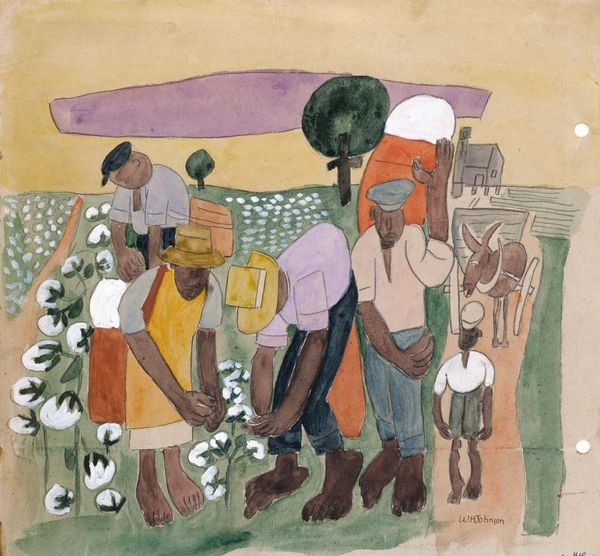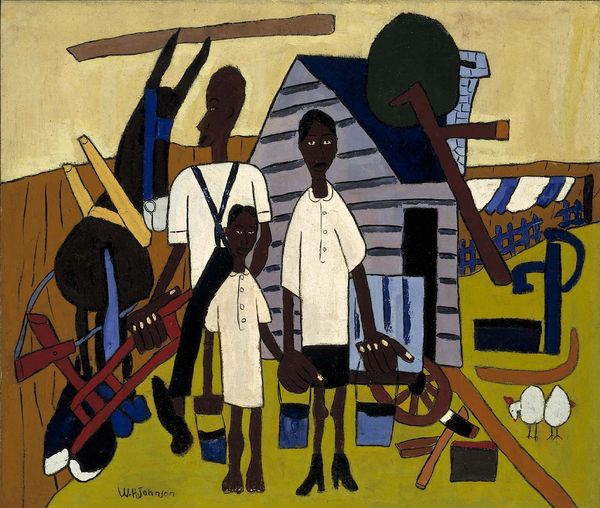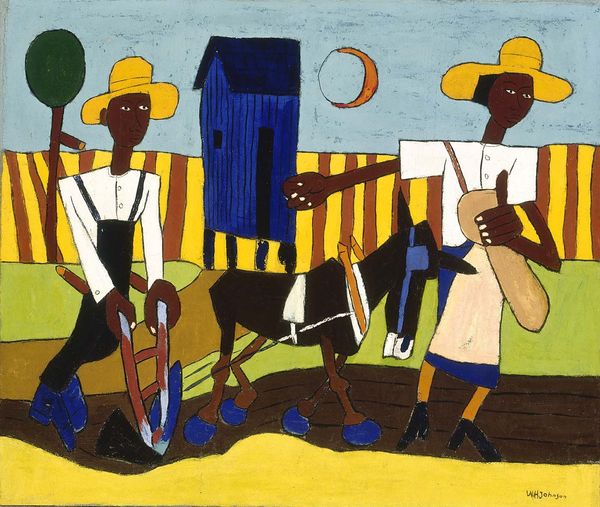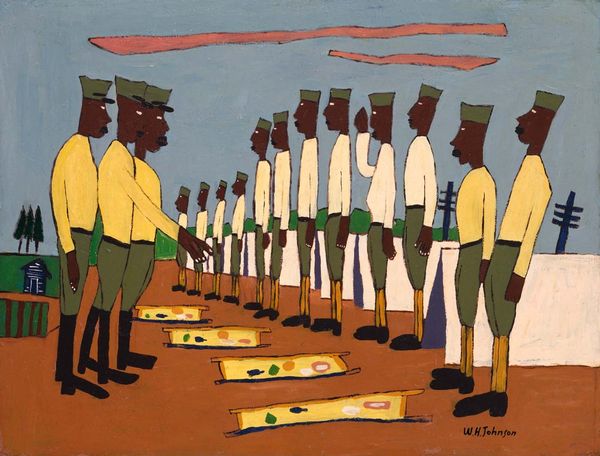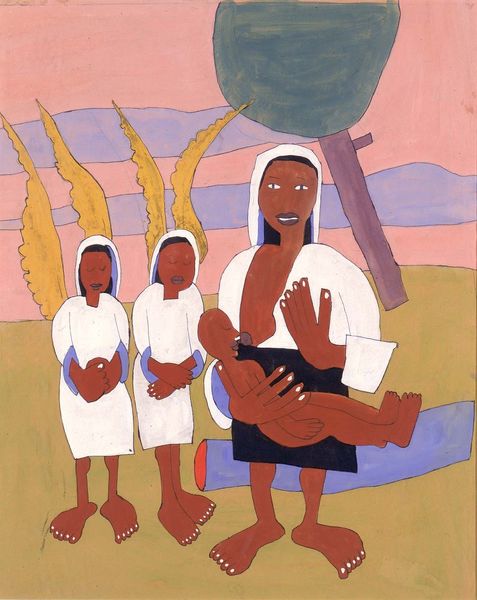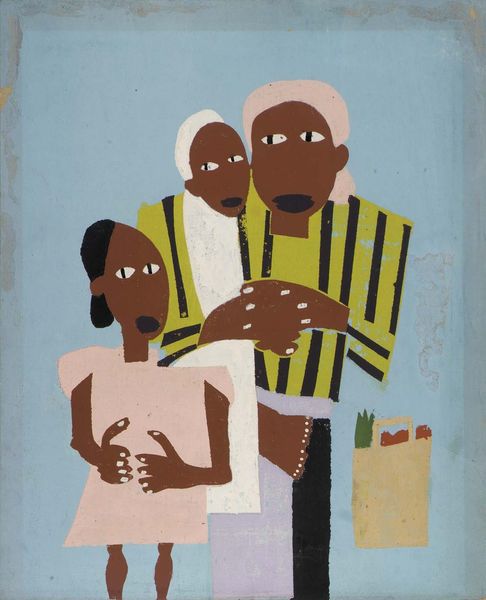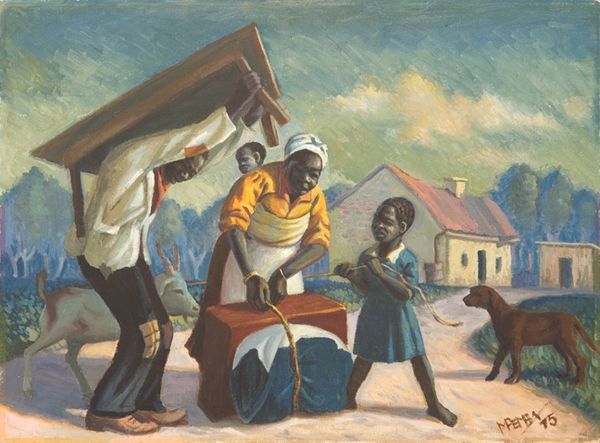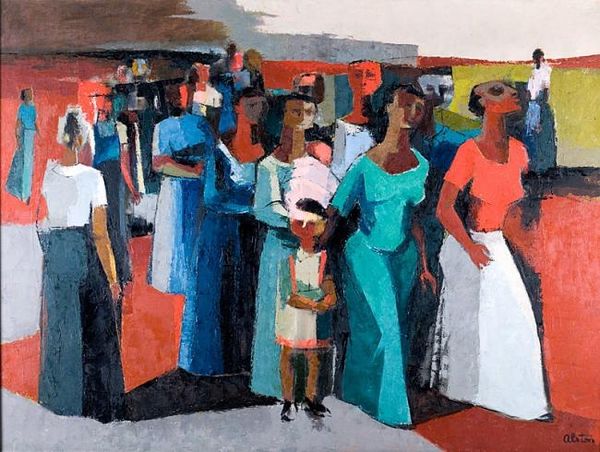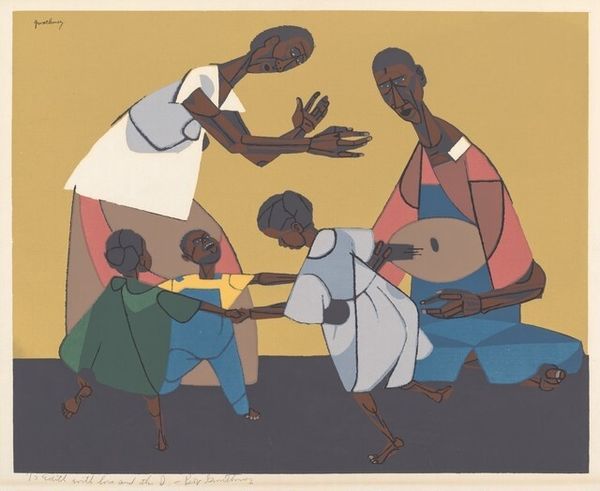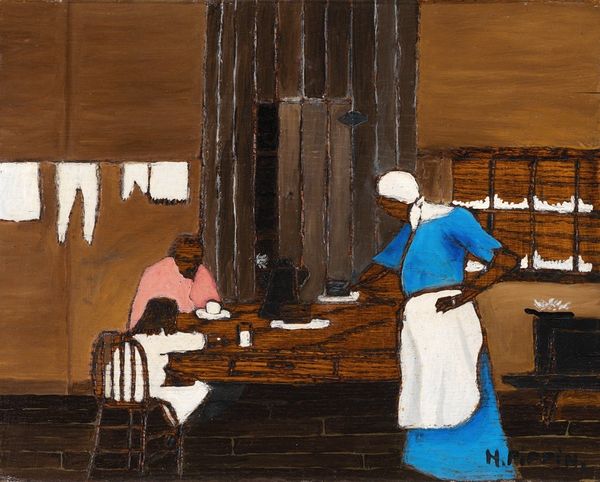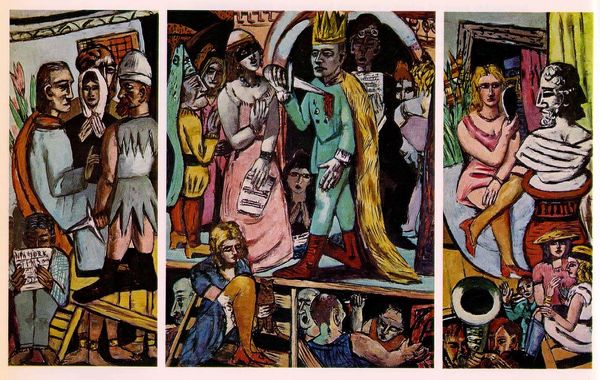
painting, watercolor
#
portrait
#
folk-art
#
painting
#
harlem-renaissance
#
folk art
#
social-realism
#
watercolor
#
group-portraits
#
naive art
#
painting art
#
watercolour illustration
Copyright: William H. Johnson,Fair Use
Curator: William H. Johnson created this watercolor titled "Red Cross Nurses Handing out Wool for Knitting" in 1942. It depicts a line of people receiving supplies from Red Cross nurses. My first impression is one of quiet resilience and community spirit. The simplified forms and flattened perspective give it a folk-art quality. What strikes you? Editor: Well, immediately, the prominent Red Cross symbols stand out, practically emblazoned on every possible surface: aprons, the ambulance...even tote bags! It clearly directs the viewer toward charity and care. And, despite the seemingly rudimentary style, Johnson expertly conveys a sense of dignity and communal support in wartime. Curator: Absolutely. Looking at the historical context, it’s essential to recognize that during World War II, organizations like the Red Cross were vital for civilian support and morale, especially within African American communities, who faced both war abroad and discrimination at home. The artwork visualizes community-based care. The people lining up could also be read as representative of a line, seeking equity. Editor: I find the emphasis on knitting quite symbolic too. Knitting evokes ideas of domesticity, care, and women's work, historically and traditionally. During wartime, knitting became an act of patriotic support; families knitted socks, hats, and other items for soldiers at the front. The image almost reads like Johnson asking us to reconsider the value in these homely symbols. What else grabs your eye? Curator: Johnson’s decision to paint the figures with elongated faces and simplified features aligns with his folk-art aesthetic, nodding to a non-academic tradition of artmaking. And I agree that it powerfully draws attention to the subjects, especially given the fact that despite their critical war efforts, the services, and by extension the visibility, of these populations were not the priority in American society. Editor: The very colours add weight to your observations. The palette is constrained: muted blues, reds, and yellows dominating to give a sense of modesty. I appreciate how the palette encourages a reflection of everyday individuals and efforts. I almost sense an understated heroic narrative to it all, as if Johnson intentionally focused his lens to capture this unique form of service. Curator: Seeing the community assembled reminds us how collective effort, whether through organizations or personal acts like knitting, strengthens the social fabric, even and perhaps especially during a crisis. Editor: Johnson presents familiar icons that, through close inspection, are emblems of unity in action; simple shapes come to encompass resilience and the everyday heroic, elements easily missed unless intentionally brought into light as he does in his work.
Comments
No comments
Be the first to comment and join the conversation on the ultimate creative platform.

